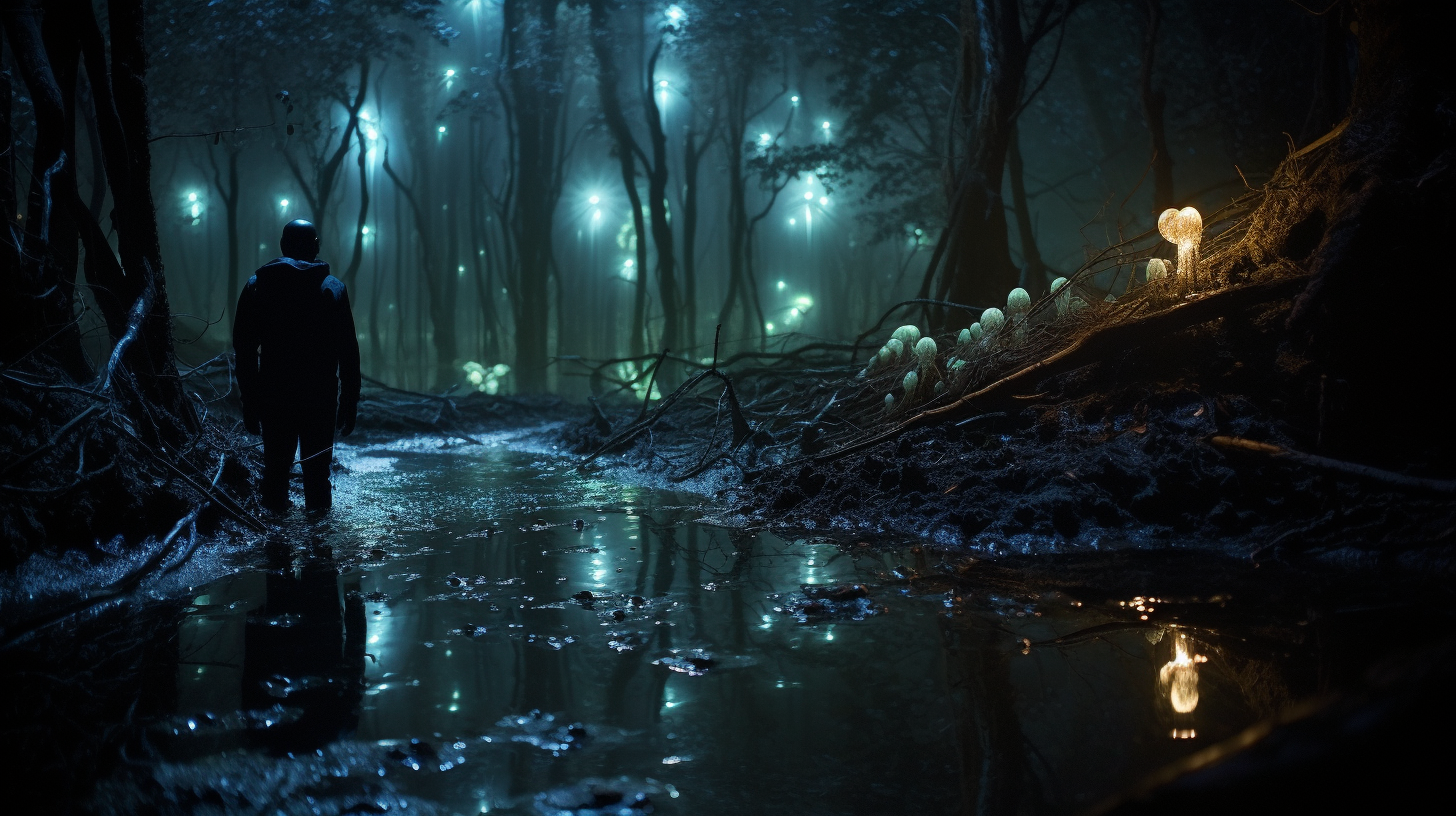In a world shrouded in the darkness of the ‘Endless Night,’ humanity’s light has dwindled to the faint glimmer of hope emitted by an uncanny natural phenomenon: bioluminescence. As the celestial bodies have been veiled by the gloom of environmental calamity, we turn our gaze downwards, to the Earth’s own creatures that dance with their innate glow amid the entropic shadows.
From the fluorescent flickers of jellyfish in vast and listless oceans to the silent flashes of fireflies in desolate, overgrown fields, these luminous organisms have undergone a curious evolution in the limelight – or should I say, the only light. In this solemn reality, they have become the unsung beacons of life, inadvertently guiding the remnants of human civilization through the bleakness that is now their home.
Recent findings suggest that the frequency and intensity of bioluminescent phenomena have grown exponentially. Scientists mull over the stark surge with both fascination and resignation, as it seems these are nature’s attempt at a spectacle to replace the starlit vault we’ve heedlessly obscured. The imagined voices of ancestors muse tragically over the stark contrast: ‘To think our greatest constellations have been supplanted by the somber twinkle of glowworms.’
Urban settings, now starved of electric luminescence and beset by frequent blackouts, unfurl a theatre of survival where the ingenuity of humankind is put to the test. Botched together are installations powered by bioluminescent algae and complex ecosystems encased within glass, daintily shimmering through the enveloping gloom – a fait accompli to which society clings.
‘In the absence of our technological prowess, these ethereal navigators command not just awe, but a wired reliance,’ claims one fringe naturalist. Their sentiment, though tinged with despair, resonates across the global conclave; civilizations that once challenged the stars now humbly bow to their terrestrial understudies.
We recount tales of bioluminescent forests where every leaf beams with otherworldly hues, an ironic, haunting beauty in contrast to past vistas of crisp dawns and amber dusks. Those enchanted enough to wander recount it like traversing the subdued domains of a storybook. Yet, let us not be beguiled into dreamy reveries; this is no fable but a grim testament to the relentless march of time under the dystopic tyranny of climate misdeeds.
As we step into the new year, the irony of counting down to another 365 days of futility isn’t lost on anyone. A palpable sense of introspection grasps the remaining few who grapple with memories of a world that once thrived under a sun that now seems like a distant fiction. One poignant query lingers unspoken: What haunting symphony will nature compose next as we destroy her opus?
